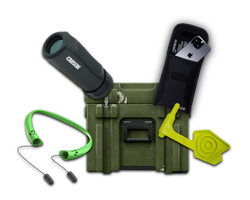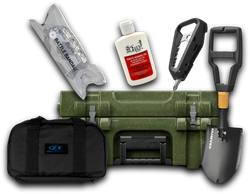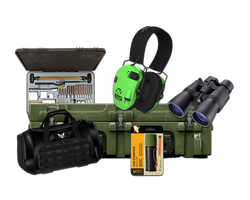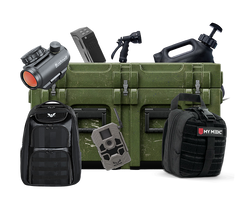How to Choose a Sleeping Bag for Backpacking: The Ultimate Guide
Table of Contents
- Introduction
- Understanding Sleeping Bag Types and Shapes
- Temperature Ratings: What You Need to Know
- Insulation Materials: Down vs. Synthetic
- Sizing and Fit Considerations
- Features and Accessories
- Maintenance and Care
- Conclusion and Final Thoughts
- Frequently Asked Questions (FAQs)
Introduction
Imagine this: after a long day of trekking through the rugged wilderness, you finally set down your pack, eager to unwind in the comfort of your sleeping bag. As the stars twinkle above and a cool breeze rustles the leaves, you slip into your bag, ready for a restful night under the open sky. But wait—do you have the right sleeping bag for your adventure?
Choosing a sleeping bag for backpacking can be a daunting task, especially with the plethora of options available on the market today. With considerations ranging from temperature ratings to insulation types, it’s easy to feel overwhelmed. The right sleeping bag can mean the difference between a refreshing night’s sleep and a chilly, restless one.
In this comprehensive guide, we will walk you through everything you need to know about selecting the perfect sleeping bag for your backpacking trips. By the end of this post, you’ll be equipped with the knowledge to make an informed decision about which sleeping bag will best suit your needs, ensuring that you enjoy every moment of your outdoor experience.
We'll cover the following key aspects:
- Understanding Sleeping Bag Types and Shapes
- Temperature Ratings: What You Need to Know
- Insulation Materials: Down vs. Synthetic
- Sizing and Fit Considerations
- Features and Accessories
- Maintenance and Care
- Conclusion and Final Thoughts
- Frequently Asked Questions (FAQs)
Now, let’s dive into the details of how to choose a sleeping bag for backpacking.
Understanding Sleeping Bag Types and Shapes
When it comes to sleeping bags, one of the first decisions you'll face is the type and shape that best suits your needs. Sleeping bags generally come in three main shapes: mummy, rectangular, and semi-rectangular (or barrel-shaped).
Mummy Sleeping Bags
Mummy sleeping bags are designed to hug the contours of your body, minimizing the amount of airspace inside the bag. This design maximizes warmth and reduces weight, making them a popular choice among backpackers who prioritize efficiency. Mummy bags often come with a hood and draft collar, which help trap heat. These bags are best for:
- Cold Weather: The snug fit keeps warmth close to your body.
- Lightweight Packing: Mummy bags typically pack down smaller than their rectangular counterparts.
Rectangular Sleeping Bags
Rectangular sleeping bags offer a more spacious fit, resembling a traditional blanket. This type is ideal for campers who prioritize comfort over weight and are less concerned with packing size. Key benefits include:
- Roominess: More space allows for movement, making it a good choice for restless sleepers.
- Versatility: These bags can often be unzipped and used as a comforter.
Semi-Rectangular Sleeping Bags
A hybrid between mummy and rectangular designs, semi-rectangular bags offer a bit of both worlds. They provide more room than a mummy bag while still being more thermally efficient than a full rectangular option. These bags are suitable for:
- Moderate Weather Conditions: They provide a balance between warmth and comfort.
- Versatile Use: Ideal for those who occasionally camp in varying temperatures and want a bag that can adapt.
Summary of Shapes
- Mummy: Best for cold weather and lightweight packing.
- Rectangular: Best for comfort and versatility.
- Semi-Rectangular: Best for a balance of warmth and space.
Temperature Ratings: What You Need to Know
Understanding temperature ratings is crucial when selecting a sleeping bag. These ratings indicate the lowest temperature at which the bag will keep you warm. However, it's important to note that individual experiences may vary based on factors such as:
- Personal Comfort: Some people are naturally warmer or cooler sleepers.
- Clothing: Wearing additional layers inside the bag can affect warmth.
- Sleeping Pad: The insulation beneath you, such as a sleeping pad, plays a significant role in heat retention.
Temperature Rating Categories
- Summer Bags: Typically rated for 35°F and above, these bags are lightweight and designed for warm weather camping.
- Three-Season Bags: Rated between 20°F and 35°F, these bags are versatile and suitable for spring, summer, and fall camping.
- Winter Bags: Rated for 20°F and below, winter bags offer maximum insulation and are designed for extreme conditions.
Choosing the Right Temperature Rating
As a general rule of thumb, choose a sleeping bag with a temperature rating 10°F lower than the coldest temperature you expect to encounter. This provides a buffer for unexpected drops in temperature.
Insulation Materials: Down vs. Synthetic
When selecting a sleeping bag, the type of insulation plays a crucial role in deciding its warmth, weight, and packability. The two primary insulation types are down and synthetic.
Down Insulation
Down insulation is made from the soft layers of feathers found under the outer feathers of ducks and geese. It is renowned for its excellent warmth-to-weight ratio and compressibility. Key advantages include:
- Lightweight and Compressible: Down sleeping bags can be packed down to a fraction of their size.
- Warmth Retention: Down provides exceptional insulation, keeping you warm even in low temperatures.
However, down insulation has some drawbacks:
- Water Sensitivity: Down loses its insulating properties when wet and takes a long time to dry.
- Cost: Down bags are generally more expensive than synthetic options.
Synthetic Insulation
Synthetic insulation, typically made from polyester fibers, is designed to mimic the insulating properties of down. Here are its key benefits:
- Water Resistance: Synthetic materials retain insulation properties even when wet.
- Affordability: Generally, synthetic bags are more budget-friendly than down bags.
However, synthetic insulation tends to be bulkier and heavier than down, which may not be ideal for ultralight backpacking.
Choosing Between Down and Synthetic
- If you prioritize weight and packability: Go for down insulation.
- If you need a bag for wet conditions or have budget constraints: Choose synthetic insulation.
Sizing and Fit Considerations
The fit of your sleeping bag can significantly influence your comfort while sleeping. A bag that is too tight may restrict movement, while one that is too loose may not retain heat effectively.
Consider Your Body Size
Before purchasing a sleeping bag, consider your height and weight. Most brands offer regular and long sizes. If you're taller than average, opt for a long bag to ensure complete coverage.
Width of the Bag
Width is also an important factor. If you are a side sleeper or someone who enjoys extra room, look for bags with a wider cut or semi-rectangular shapes. Conversely, if you prefer a snug fit for warmth, a mummy bag may be ideal.
Features to Consider
- Zipper Length: Full-length zippers allow for more ventilation options, while half-zippers can save weight.
- Draft Collars and Hoods: These features enhance warmth by preventing heat loss through openings.
Summary of Sizing
- Choose the right length: Regular or long based on your height.
- Consider width: Narrower for warmth, wider for comfort.
- Look for useful features: Zipper length, draft collars, and hoods enhance performance.
Features and Accessories
Modern sleeping bags come equipped with a variety of features to enhance functionality and comfort. Here are some worth considering:
Draft Tubes
Draft tubes prevent cold air from entering through the zipper and help retain warmth, particularly in colder environments.
Hoods and Neck Baffles
These features can help trap heat around your head and neck, which is critical for staying warm in winter conditions.
Compression Sacks
A compression sack is essential for backpacking, as it allows you to reduce the volume of your sleeping bag, freeing up space in your pack.
Accessories
- Sleeping Bags Liners: Use liners for added warmth and to keep your bag clean.
- Storage Bags: Store your sleeping bag in a loose, breathable bag to maintain its loft when not in use.
Maintenance and Care
Proper care and maintenance will extend the life of your sleeping bag. Here are some tips:
Cleaning Your Sleeping Bag
- Follow Manufacturer Instructions: Different materials require different cleaning methods.
- Use a Front-Loading Washer: Top-loading machines can damage insulation.
Drying
- Dry Thoroughly: Ensure that both down and synthetic bags are completely dry to prevent mold and mildew.
- Use a Dryer with Tennis Balls: This helps restore loft in down insulation.
Storage
- Store Loose: Keep your sleeping bag in a large storage sack to maintain loft.
- Avoid Compression Over Long Periods: Only compress your bag for short trips to avoid damaging insulation.
Conclusion and Final Thoughts
Choosing the right sleeping bag for backpacking is a critical decision that greatly affects your comfort and performance in the outdoors. By understanding the different types, temperature ratings, insulation types, sizing, and additional features, you can confidently select a sleeping bag that meets your specific needs.
Whether you're a weekend camper or a seasoned backpacker, the right sleeping bag will enhance your experience, providing warmth and comfort when you need it most.
For those ready to invest in their next backpacking adventure, consider exploring Crate Club’s curated selection of tactical gear and survival tools, including high-quality sleeping bags that meet the demands of your outdoor adventures.
Frequently Asked Questions (FAQs)
1. What is the best sleeping bag for summer backpacking?
For summer backpacking, look for a sleeping bag rated for 35°F or higher, ideally a lightweight and compressible mummy bag to save space in your pack.
2. How should I choose the temperature rating for my sleeping bag?
Choose a sleeping bag with a temperature rating 10°F lower than the coldest temperature you expect to encounter for adequate warmth and comfort.
3. Is down insulation worth the extra cost?
If you prioritize lightweight gear and plan to use your sleeping bag in dry conditions, down insulation can be worth the investment due to its excellent warmth-to-weight ratio.
4. How do I clean my sleeping bag?
Follow the manufacturer's care instructions, typically involving a gentle cycle in a front-loading washing machine and drying with tennis balls to maintain loft.
5. Can I use a sleeping bag in winter without additional insulation?
While it's possible, it's advisable to use a winter-rated sleeping bag for cold conditions to ensure adequate warmth. Layering with insulated clothing can enhance warmth if using a less-rated bag.
6. Are there sleeping bags specifically designed for side sleepers?
Yes, some brands offer bags designed with a roomier fit for side sleepers, providing more space for movement and comfort.
7. How should I store my sleeping bag when not in use?
Store your sleeping bag in a large, breathable storage sack rather than a compression sack to maintain its loft and prolong its lifespan.
By understanding these aspects and exploring the right options, you can confidently choose a sleeping bag that enhances your outdoor experience. Whether you're venturing into the wilderness or simply enjoying a night under the stars, the right sleeping bag will ensure you wake up refreshed and ready for adventure. For more gear options, check out Crate Club’s Shop and consider subscribing to their Subscription Services for curated tactical gear and survival tools tailored to your needs.
Share this article



